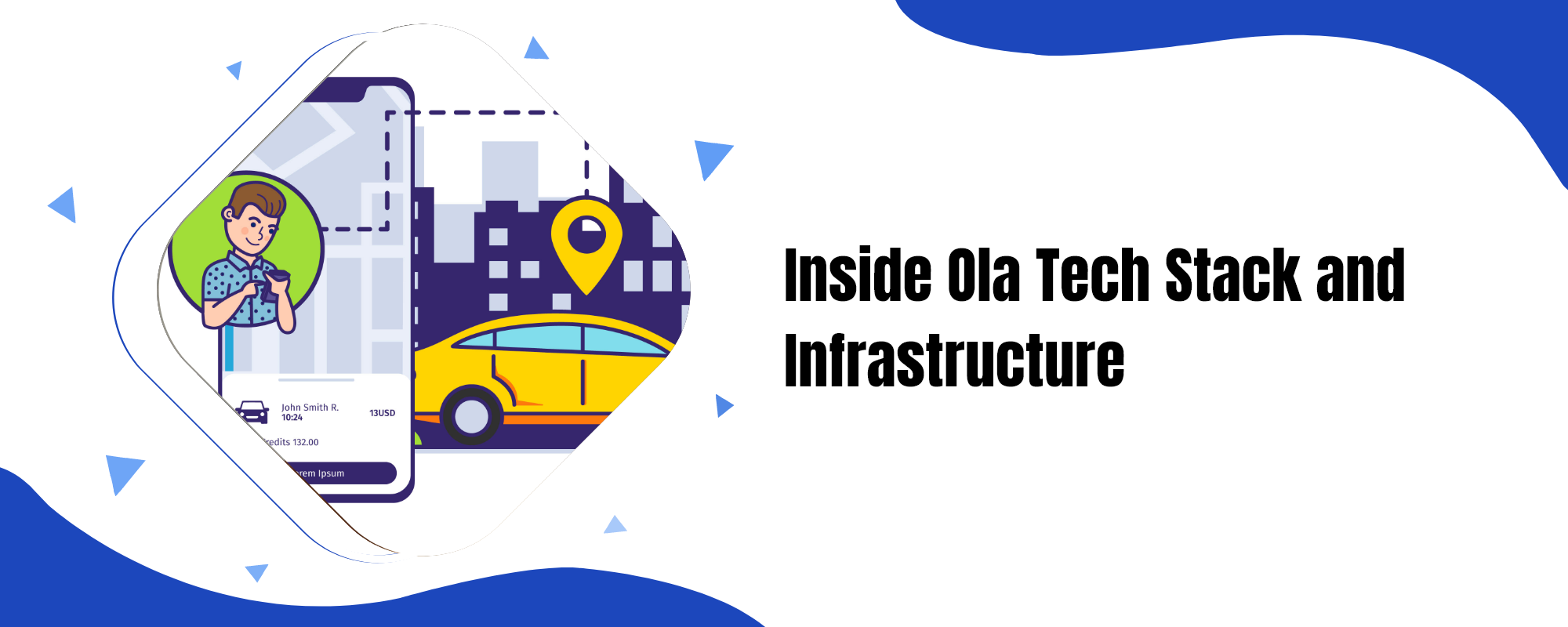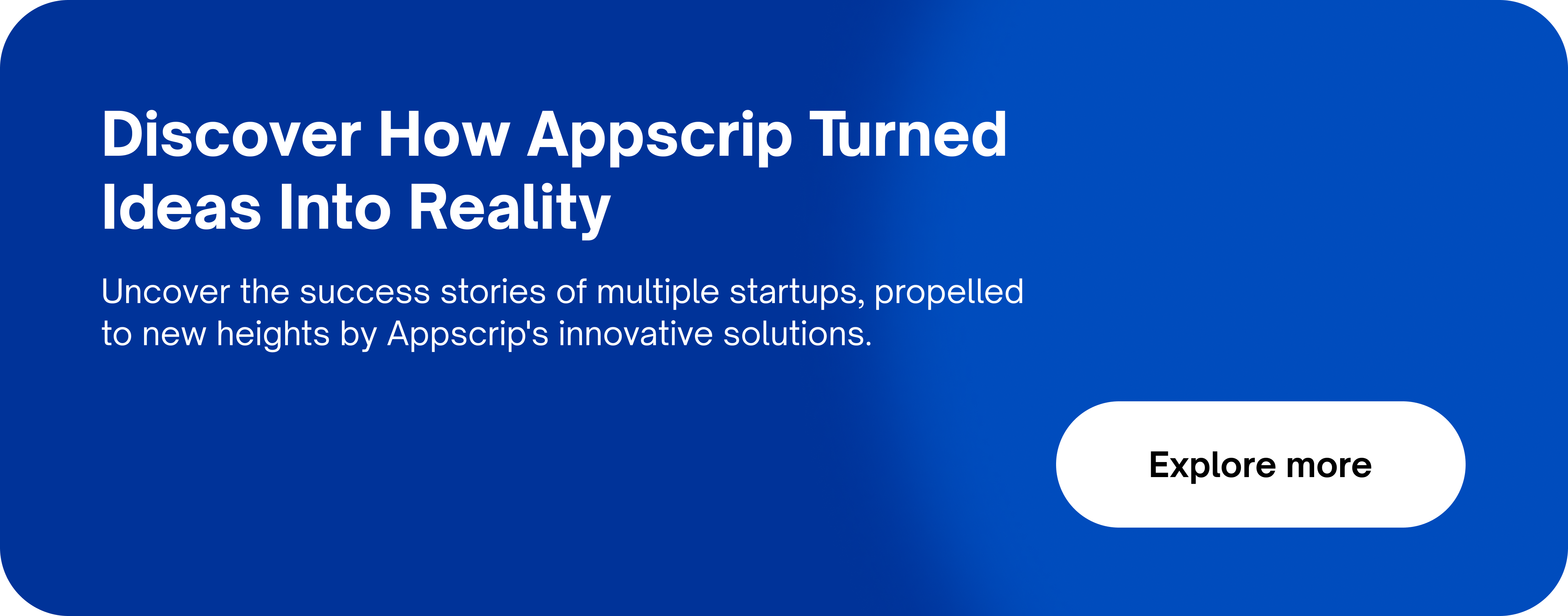In the rapidly evolving technological landscape, the race to build the most efficient and innovative tech stack is on. At the forefront of this race is Ola, a trailblazing ride-hailing service that has redefined urban mobility for millions across the globe.
In this article, we discover the layers of Ola tech stack and take you on a fascinating journey through the company’s cloud infrastructure. Get ready to embark on a thrilling ride as we unveil the secrets behind Ola’s unparalleled scalability, robustness, and seamless user experience. Hold on tight, because we’re about to explore the technological marvels that make Ola the titan it is today.

Frontend technologies of Ola Tech Stack
The frontend of Ola tech stack comprises several key technologies that work together to create a seamless user experience for the Ola Cab service. These technologies help to develop, design, and optimize the user interface and interactions for Ola’s web and mobile applications.
JavaScript: JavaScript is a widely-used programming language for web development. Ola uses JavaScript to create interactive elements, animations, and responsive features on their website and mobile applications, enhancing user experience and engagement.
HTML5: HTML5 is the latest version of the HyperText Markup Language, used to structure the content of web pages. Ola uses HTML5 to create a well-structured, accessible, and SEO-friendly web interface for their services.
CSS3: CSS3 (Cascading Style Sheets) is a styling language used for designing the look and feel of a website or application. Ola utilizes CSS3 to create a visually appealing and consistent design across their platforms, ensuring a smooth user experience.
Responsive Web Design: Ola’s frontend tech stack includes responsive web design principles, ensuring that their applications are accessible and optimized for various screen sizes and devices, such as smartphones, tablets, and desktop computers.
Single Page Application (SPA) Frameworks: Ola tech stack utilizes popular SPA frameworks, such as Angular or React, to create a seamless navigation experience without constant page reloading. This allows users to enjoy a smoother and more interactive experience while using the Ola app.
Progressive Web App (PWA): Ola implements PWA technologies to enhance the mobile experience by providing features such as offline access, faster load times, and the ability to add the application to the user’s home screen – all without requiring a native app download.

Backend technologies of Ola Tech Stack
The backend of Ola tech stack primarily comprises Microsoft Azure, Hazelcast, and JavaScript. These technologies work together to create a robust, efficient, and functional infrastructure for the popular ride-sharing platform.
Microsoft Azure: As the primary cloud computing service provider, Microsoft Azure plays a crucial role in Ola’s backend infrastructure. Azure offers a wide range of services, including serverless computing, data storage, and analytics, which help Ola manage its vast user base and ride data effectively. Additionally, Azure’s global infrastructure enables Ola to scale its operations and maintain high availability across regions.
Hazelcast: Ola utilizes Hazelcast, an in-memory data grid, to manage and store data in real-time. This open-source technology helps Ola achieve low-latency and high-throughput performance, which is essential for providing quick and accurate ride information to users. Hazelcast also offers distributed computing capabilities, allowing Ola to process large volumes of data across multiple nodes to maintain optimal performance.
JavaScript: Although JavaScript is primarily known as a frontend language, Ola tech stack leverages it on the backend as well. By using JavaScript-based technologies like Node.js, Ola can create a seamless, efficient, and consistent experience for both developers and users. This choice enables Ola to benefit from the vast ecosystem of JavaScript libraries and tools, streamlining the development process and ensuring that the platform remains up-to-date with the latest technological advancements.
Together, these technologies form a powerful backend tech stack that allows Ola to deliver a reliable, scalable, and high-performing service to its millions of users worldwide. This carefully curated combination of services and tools addresses the unique challenges and requirements of the ride-sharing industry, ensuring that Ola remains a leader in the market.
Infrastructure technologies of Ola Tech Stack
Microsoft Azure: Ola leverages Microsoft Azure as its primary Infrastructure as a Service (IaaS) provider. Azure offers a robust, scalable, and secure cloud computing platform that allows Ola to deploy and manage its applications and services efficiently. It provides a range of tools and capabilities for real-time monitoring, capacity trending, and workload migration.
Platform as a Service (PaaS): To support its IoT initiatives, Ola uses PaaS solutions, which includes both infrastructure and platform services for applications. This allows Ola to deploy and manage a variety of operating systems and virtualization technologies, enabling seamless integration with its existing infrastructure.
Virtual Private Cloud (VPC): Ola tech stack uses VPCs as part of its transport layer, providing secure access to developers and administrators for workload creation, data storage, and process execution. This ensures a secure and isolated environment for managing its infrastructure and applications.
In summary, the cloud infrastructure of Ola tech stack is built on a combination of IaaS, PaaS, and other key technologies such as Microsoft Azure. This comprehensive stack enables Ola to deliver reliable and efficient transportation services to customers worldwide while maintaining a secure and scalable infrastructure.
Conclusion
Ola’s robust tech stack and cloud infrastructure have played a pivotal role in their journey to becoming a global leader in the ride-hailing industry. By leveraging cutting-edge technologies, Ola tech stack has been able to create a seamless, efficient, and reliable experience for both drivers and riders. Their innovative approach to data analytics, scalability, and security enables them to continually adapt and evolve in the face of ever-changing market demands.
As Ola continues to expand its reach and explore new frontiers, its tech stack and cloud infrastructure will remain the backbone of its success, fueling the company’s vision of transforming urban mobility for millions worldwide. In an era where technology is shaping the future of transportation, Ola’s commitment to innovation and excellence serves as a shining example for others to follow.









